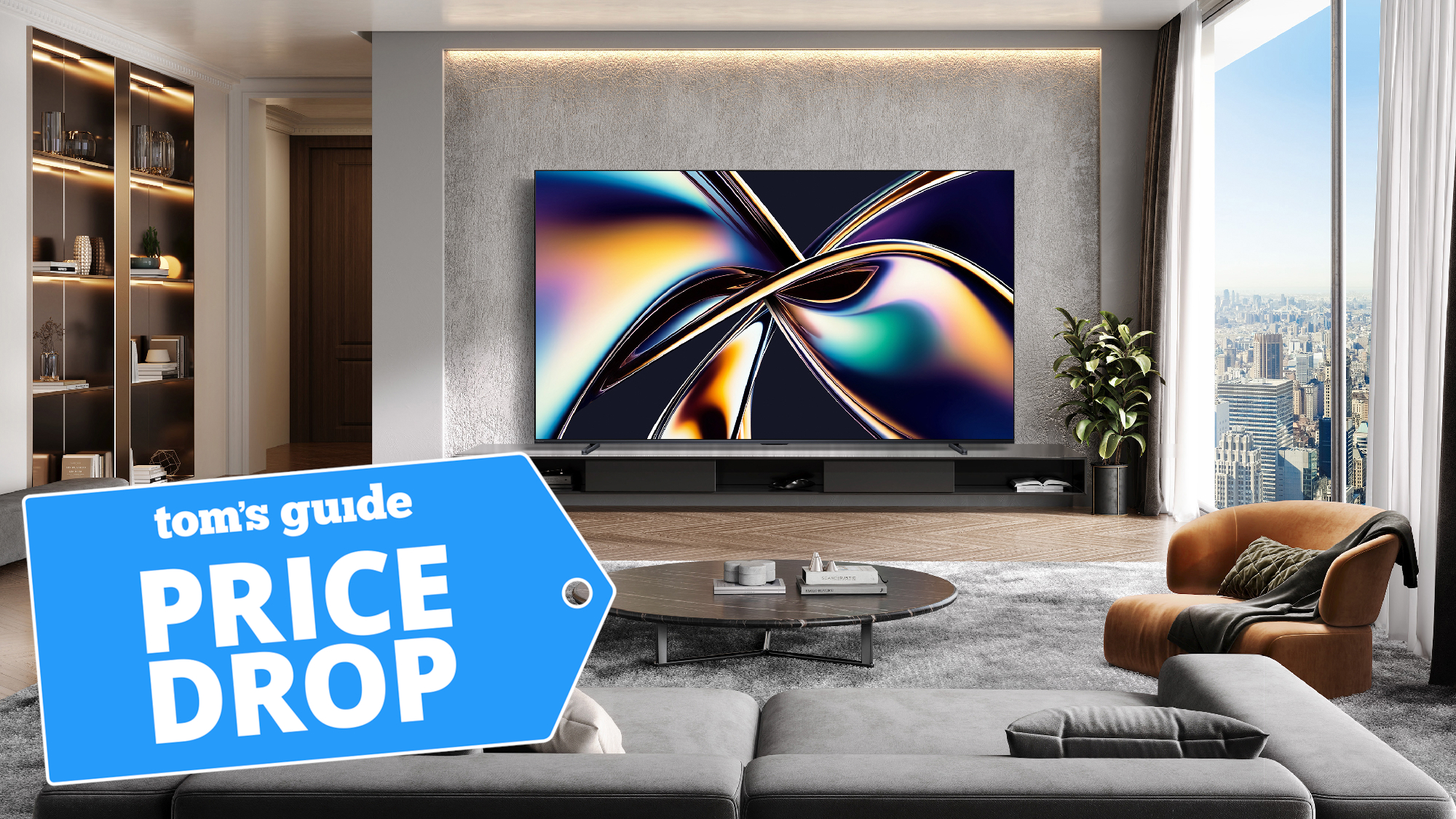Tom's Guide Verdict
While the Huawei Watch 2 has some useful fitness features, they're still not robust enough for us to recommend this Android Wear watch.
Pros
- +
Small charger
- +
Good battery life
- +
Always-on display
Cons
- -
Humdrum design
- -
Mediocre apps
- -
No LTE support for the U.S version
Why you can trust Tom's Guide
The Huawei Watch 2 is yet another smartwatch you probably won't buy. As smartwatches go, it's not bad; it has some good fitness features, like an accurate GPS and a heart rate monitor, and it has a long battery life. The problem is, these are things better accomplished by bona fide, less expensive running watches, and the Huawei Watch 2's smartwatch features aren't any more impressive than what's already on the market.
Design
The Huawei Watch 2 is the first smartwatch I've worn in a while that didn't dominate my wrist. At 2 ounces, it's markedly lighter than the hulking, 3.15-ounce LG Watch Sport. I didn't feel like I was going to develop Popeye-like muscles in my left arm merely by lifting the watch to my face.
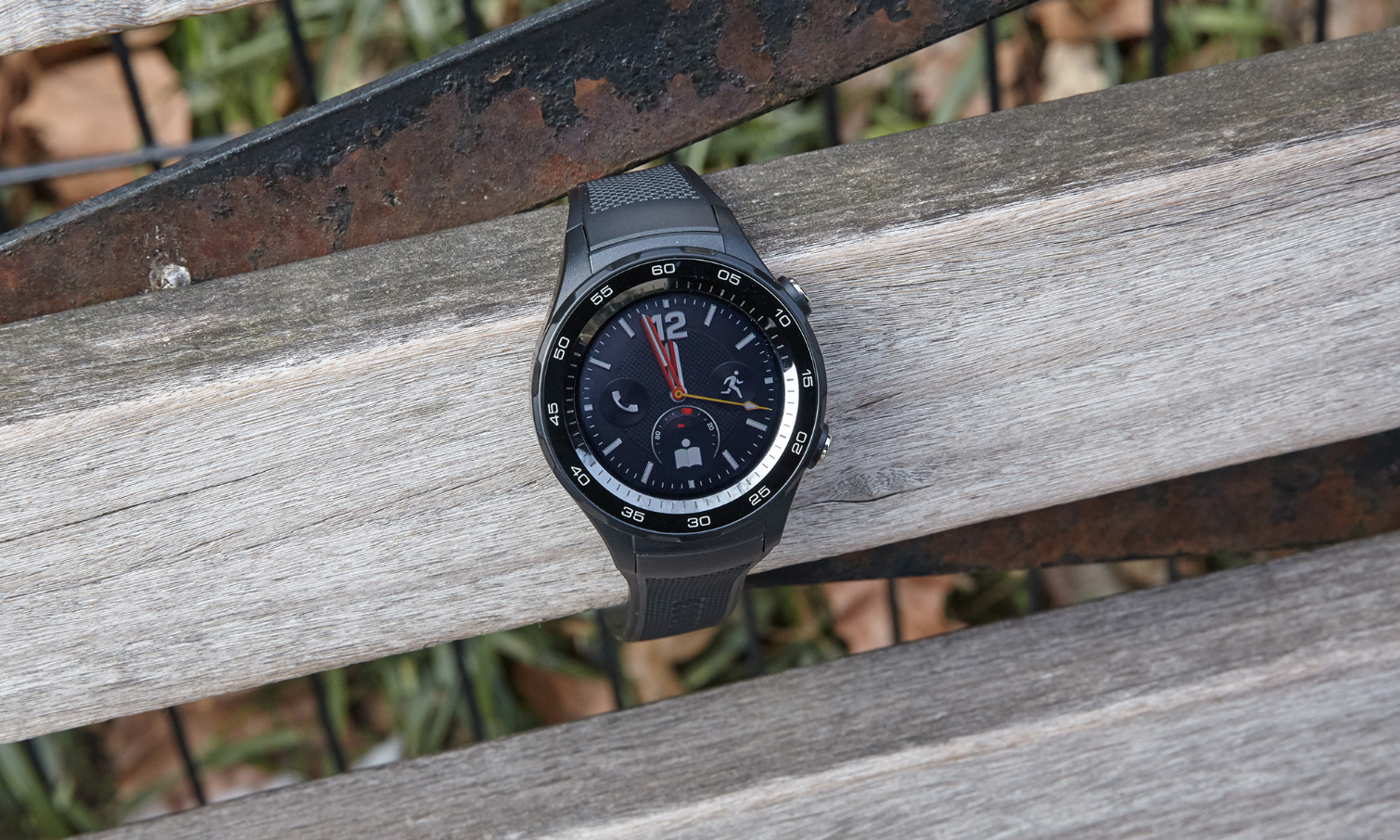
Lightness aside, I wasn't overly impressed by the Watch 2's design. Its black, ceramic bezel has indentations around its circumference, which makes the watch look like a cousin to Samsung's Gear S3 Frontier. Unlike on the Gear S3 Frontier, though, the Huawei's bezel doesn't rotate, so you can navigate menus only by using the touch screen or the two stainless-steel buttons on the right.
At 0.5 inches thick, the Watch 2 is only a little thicker than the more refined LG Watch Style (0.4 inches), but the verticality of the Huawei's sides make this watch feel even taller.
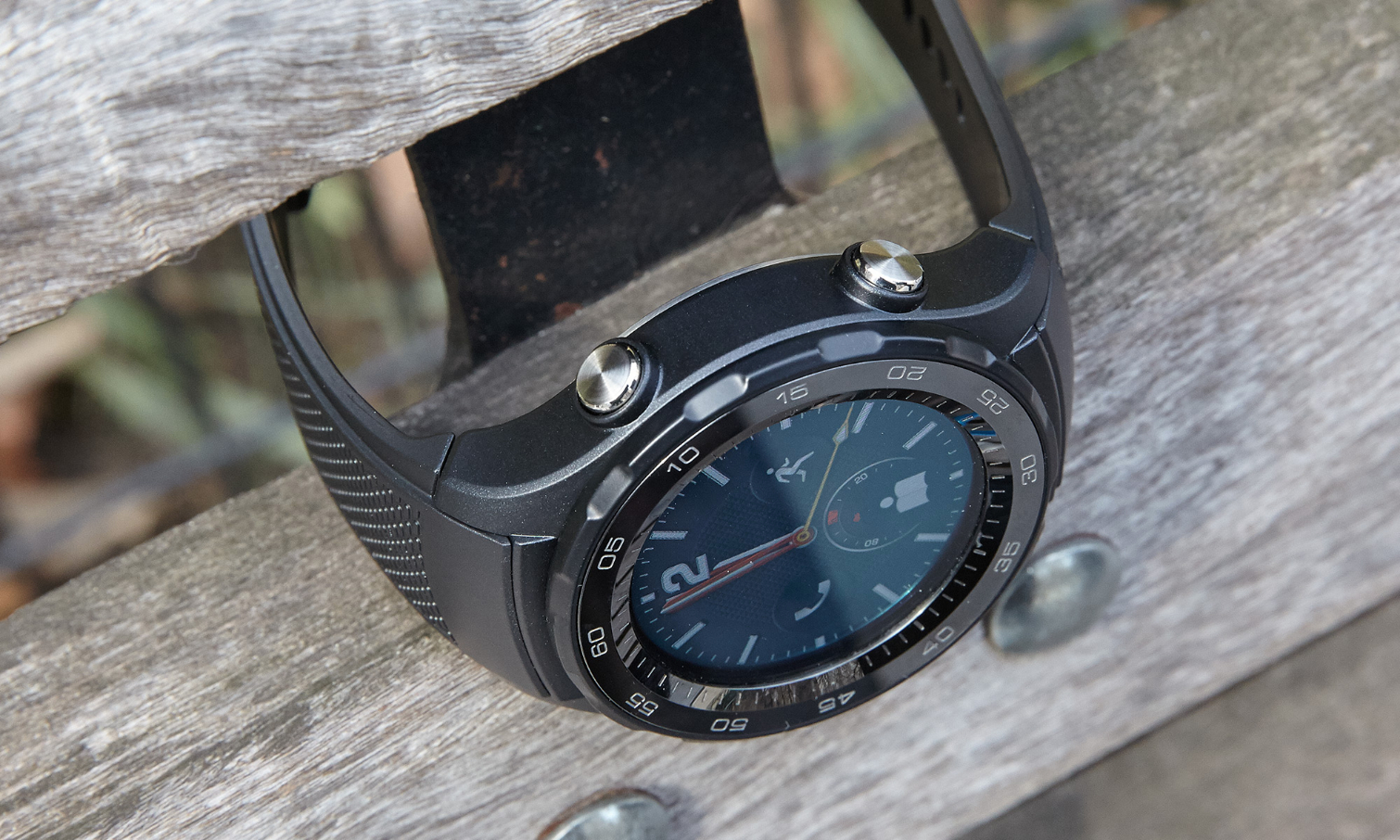
Huawei seems to have given little thought to the underside of the Watch 2, which doesn't mesh stylistically with the rest of the device and feels unfinished. Made of stainless steel, it has a large optical heart-rate sensor in the middle and four metal contacts on one edge for the wireless charger.
The black rubber strap that comes with the Watch 2 is unremarkable, but comfortable. I also like that, unlike with the LG Watch Sport, I could remove and replace the Huawei's band with one of my choosing.
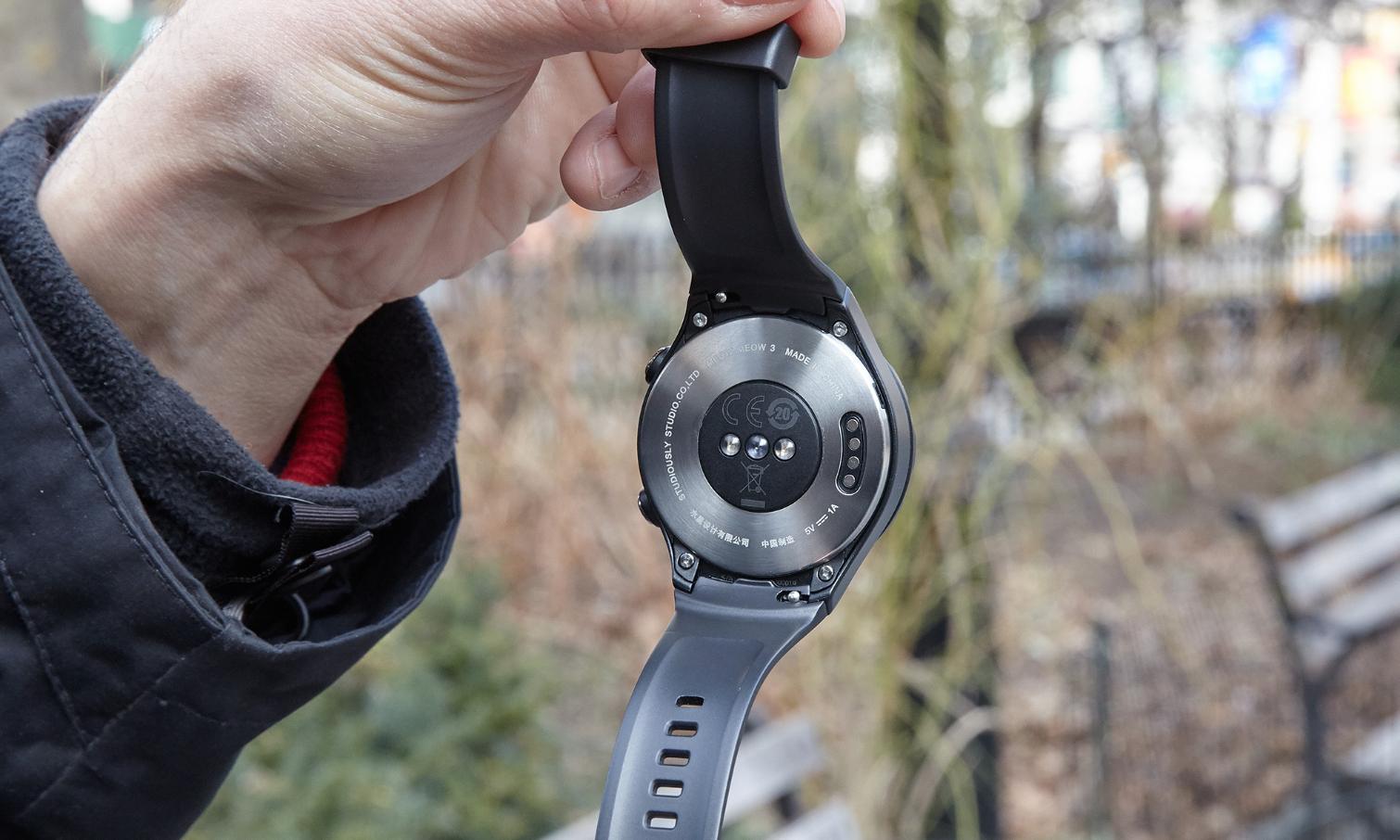
While the Watch 2 has LTE, this feature is not available in the U.S. The Watch 2 is IP68-rated, meaning it can withstand being submerged in up to 1.5 meters of water for up to 30 minutes.
MORE: Smartwatch Buying Guide
Display and Watchfaces
The 1.2-inch display on the Watch 2 was small but pleasingly bright, and at a resolution of 390 x 390 pixels, it's crisp, too. Like other Android Wear 2.0 watches, its display has an always-on setting, which features a stripped-down watch face that still shows the time. Tapping the display or rotating your wrist changes the screen to its active mode, in which you'll see additional animations, such as a second hand, or information such as remaining battery life and your steps for the day.
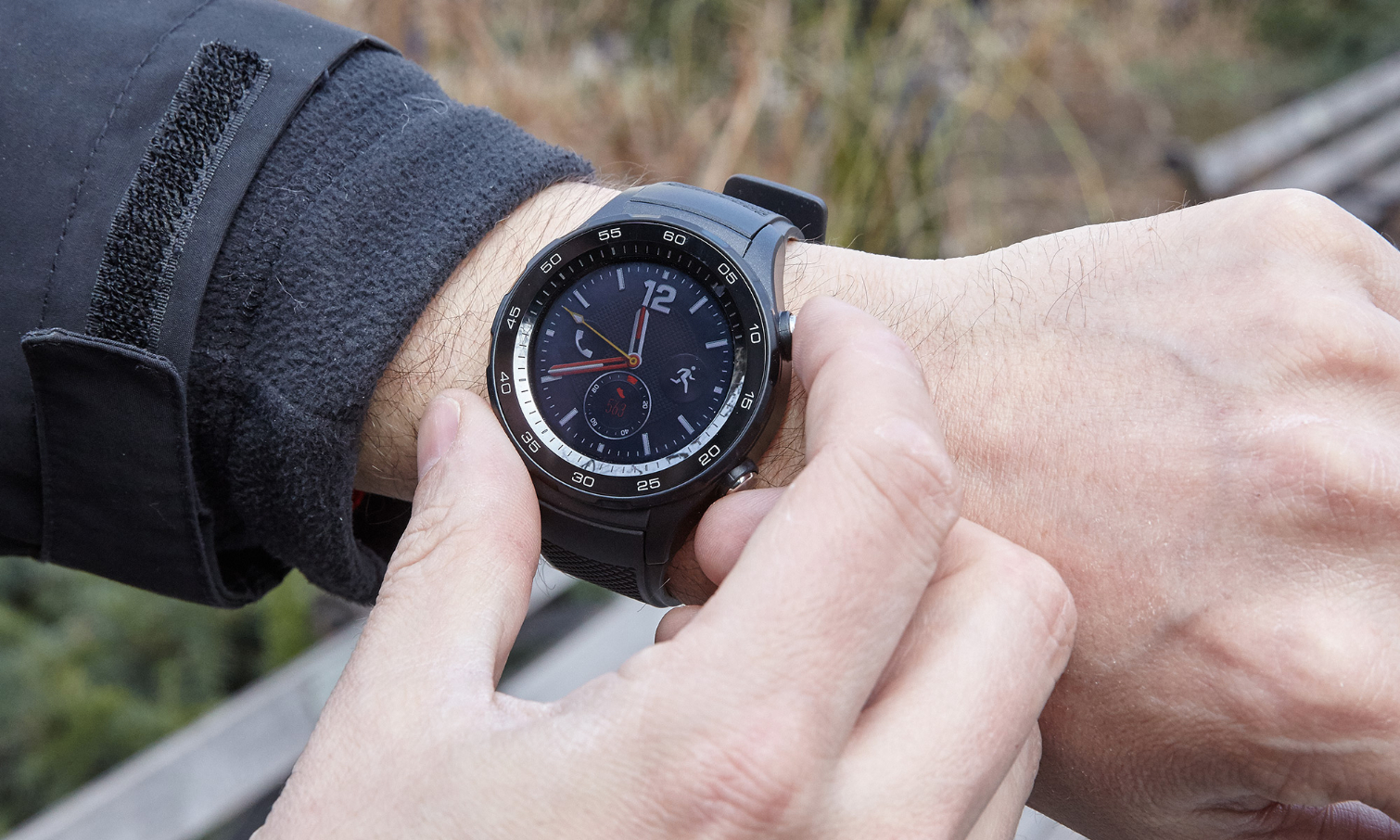
The Classic watch face was pretty clever, with four customizable subdials, one of which had an animation of spinning gears. It's just too bad you can't control when the watch will switch from the active face to the more passive one.
Huawei Fitness
While not as robust as what you'd get in a real running watch, the depth of features on the Watch 2 pleasantly surprised me. Within the Fitness app, exercise options are fairly limited (Run, Fat Burn, Cycling, Treadmill and a couple others). You can set a goal within each, such as distance and calories burned.
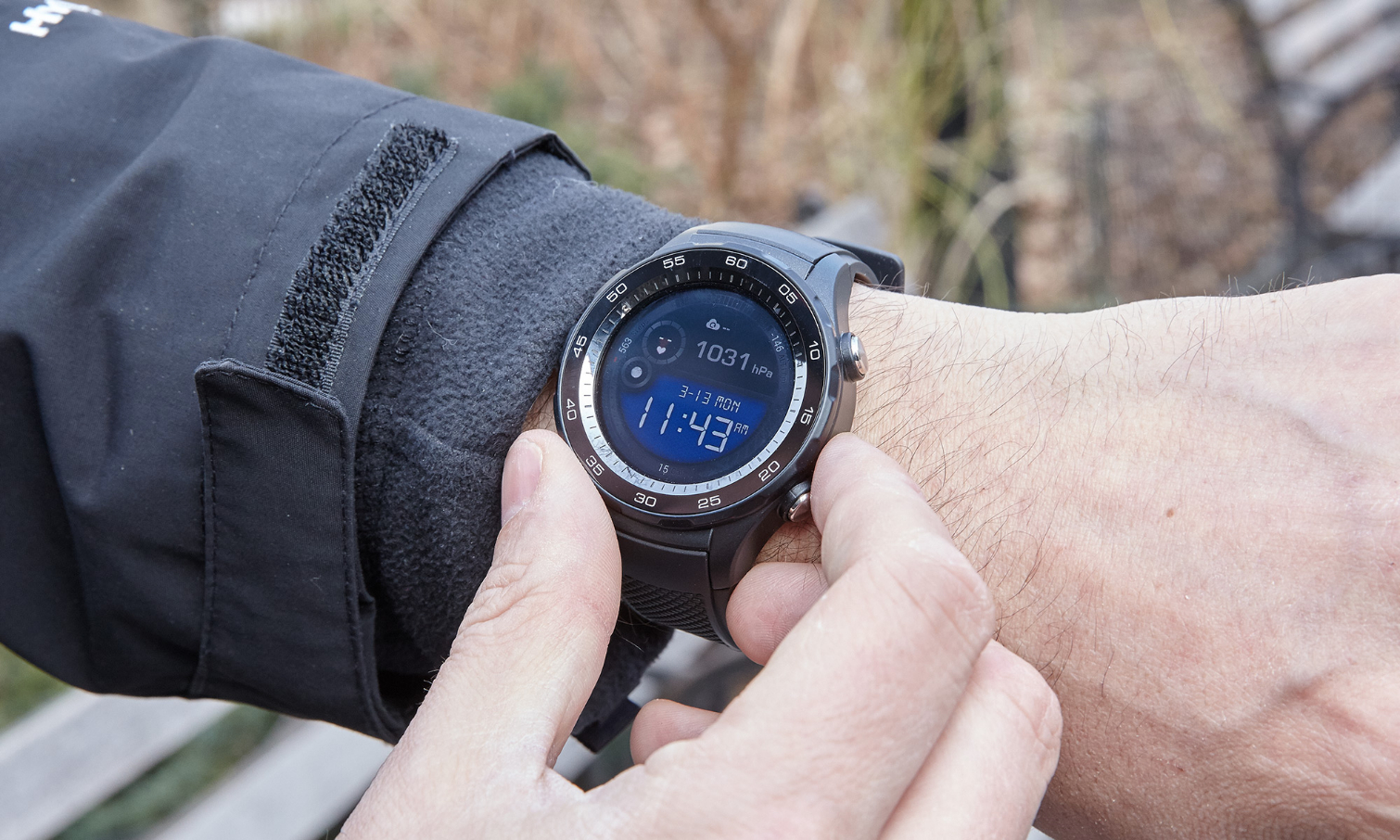
I took the Huawei Watch 2 for a 4-mile run and liked that the device would buzz at each mile and give a summary of my progress to that point. It's something found on bona fide running watches, but missing on many smartwatches.
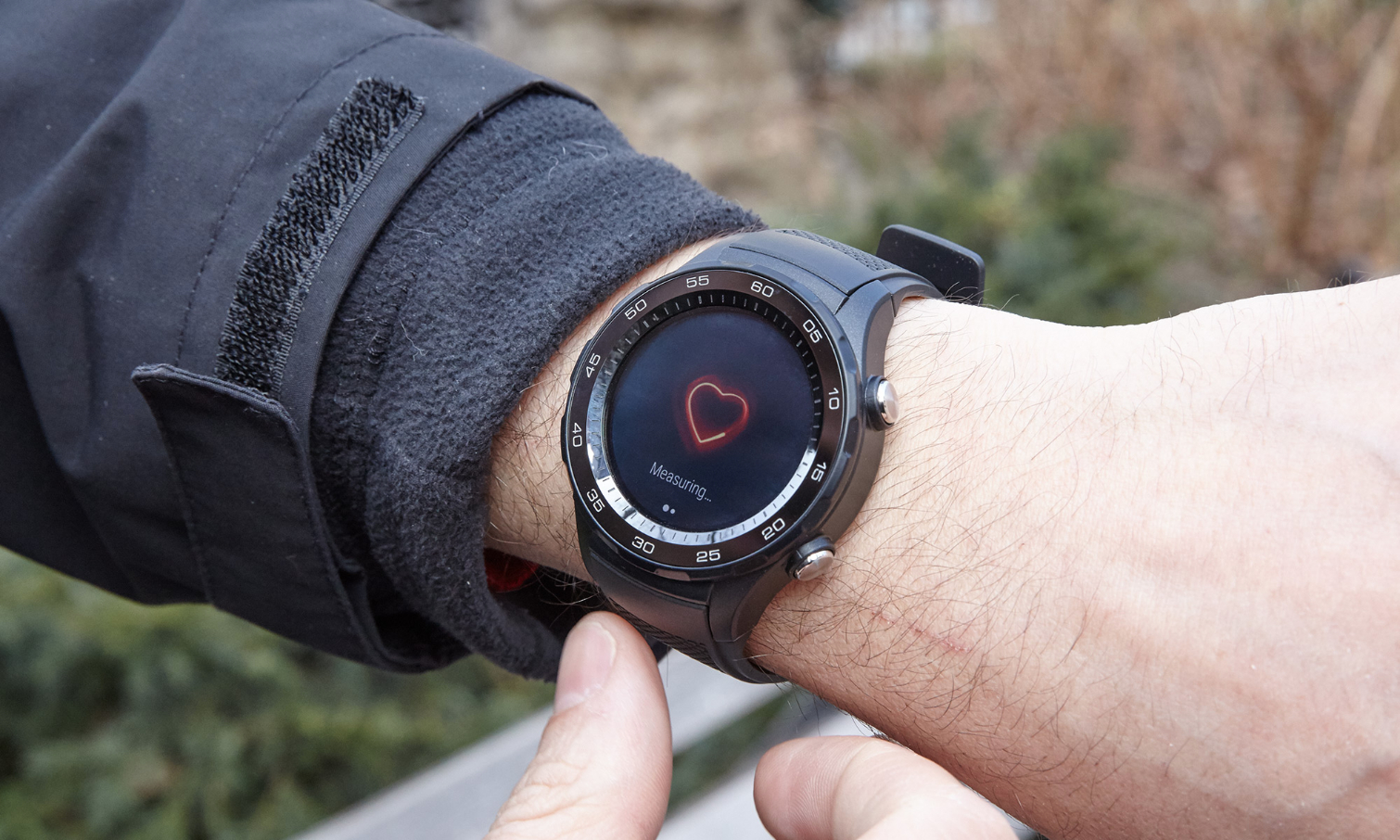
Annoyingly, though, the Fitness app started recording my run before a GPS lock had been established. As a result, I had to pause the workout to wait for a lock. Fortunately, that took only about a minute, and proved accurate when checked against a Garmin Forerunner 235.
After the run, the watch showed how effective the workout was and details of the run (such as distance, pace, steps per minute, elevation gained, heart rate and recovery time). It even displayed a small map of my route, but while the route looked correct (in that it accurately showed when I turned right or left), the map it was overlaid on was completely wrong.
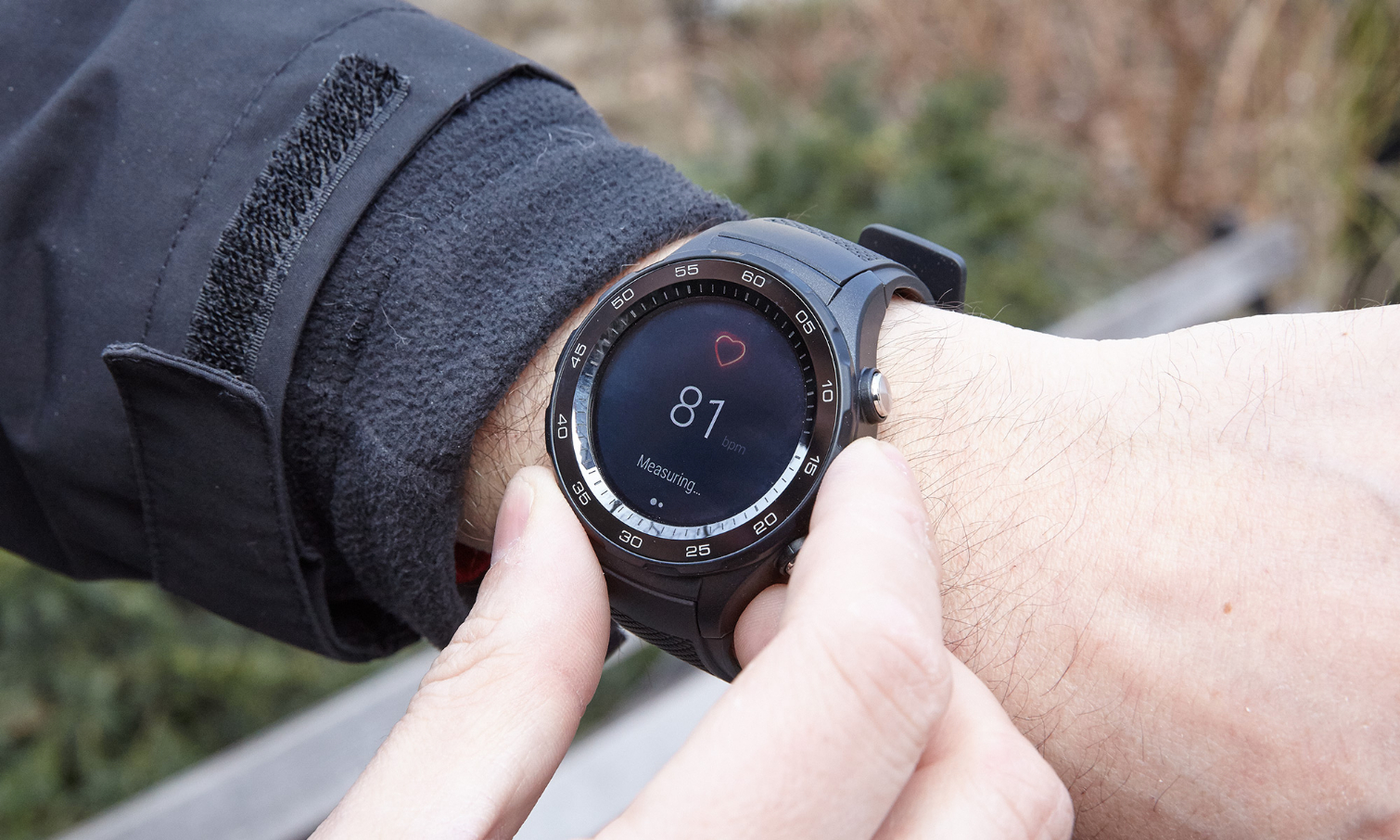
Outside of monitoring regular exercise, the Watch 2 records your daily steps, altitude and resting heart rate, as well as your heart rate zones when you're running. You can set reminders to stand up, as well as daily goals for steps and sleep. The watch will even record your VO2 max score, which is an indication of your overall health.
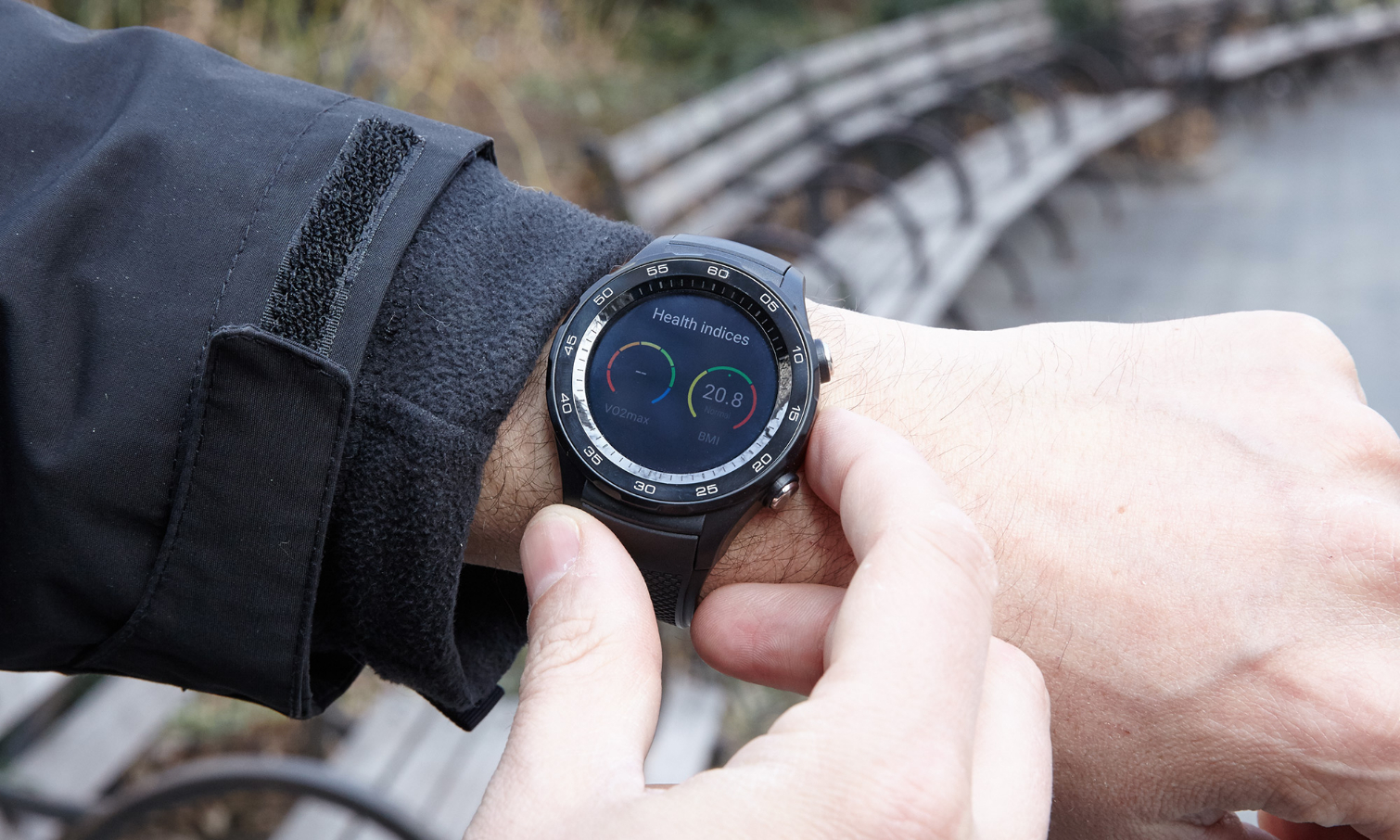
The Huawei Wear app, separate from the Android Wear app, lets you view your health stats as recorded by the watch. But it opens yet another app, Huawei Health, to show a more detailed look at your daily fitness information. In fact, there's not much purpose to the Huawei Wear app, as all the information it contains can be found elsewhere.
The Huawei Health app lets you set training goals and create a customized plan. At the bottom of the app is an icon to pair a device with the app, but curiously, the Watch 2 is not among the devices listed. You can share data from the Huawei Health app with MyFitnessPal, Up by Jawbone and Google Fit. You're better off skipping Huawei Health and using one of those apps instead.
MORE: 20 Best Fitness Apps
Android Wear 2.0
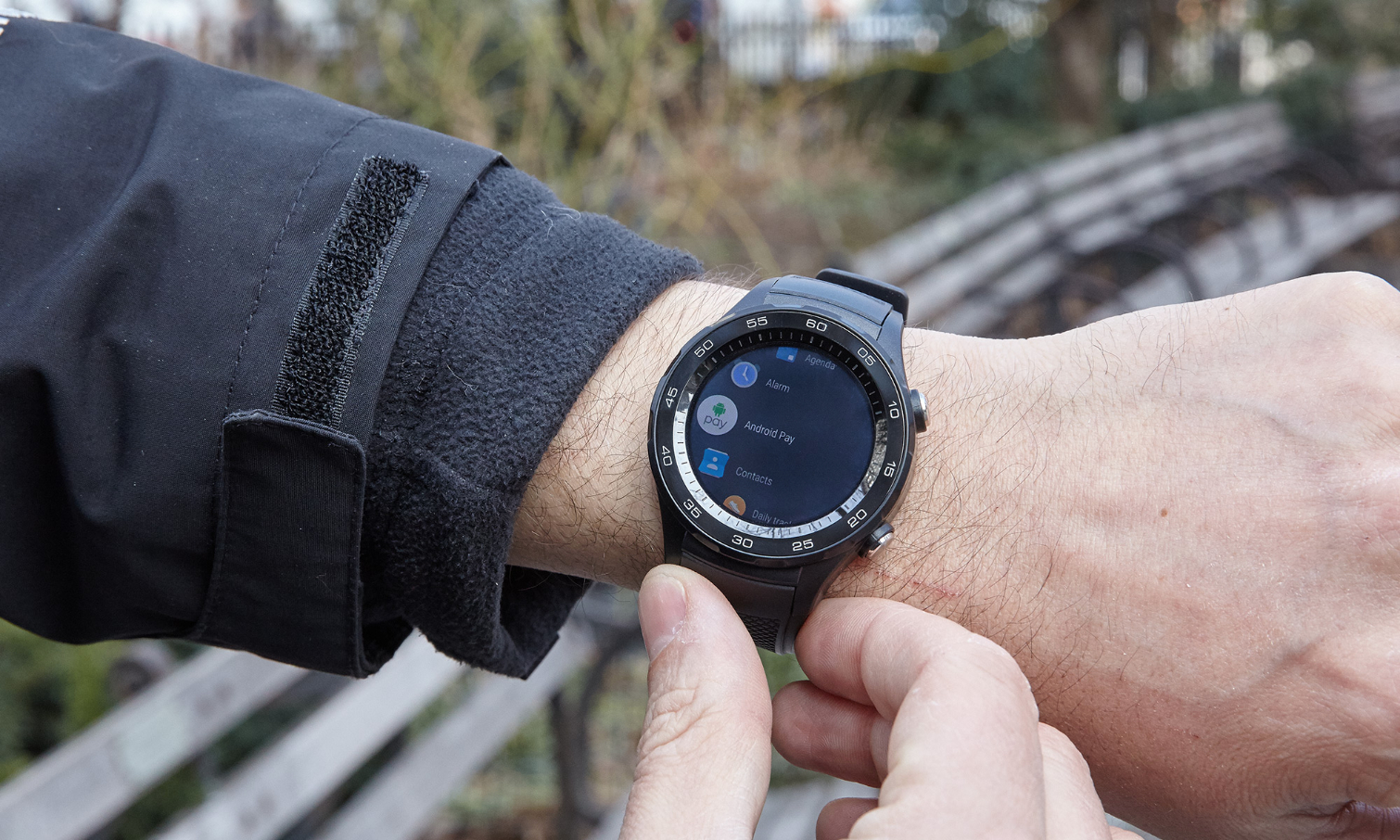
The Huawei Watch 2 is one of the first of a new batch of smartwatches that can run Android Wear 2.0. This version of Google's wrist-based OS introduces several upgrades, including the ability to install apps directly on the watch (rather than going through your smartphone), more options for text input and greater integration with Google Fit.
Battery Life
As with almost all Android Wear watches I've tested, the Huawei Watch 2 lasted about a day when receiving notifications and performing other smartwatch-like functions.
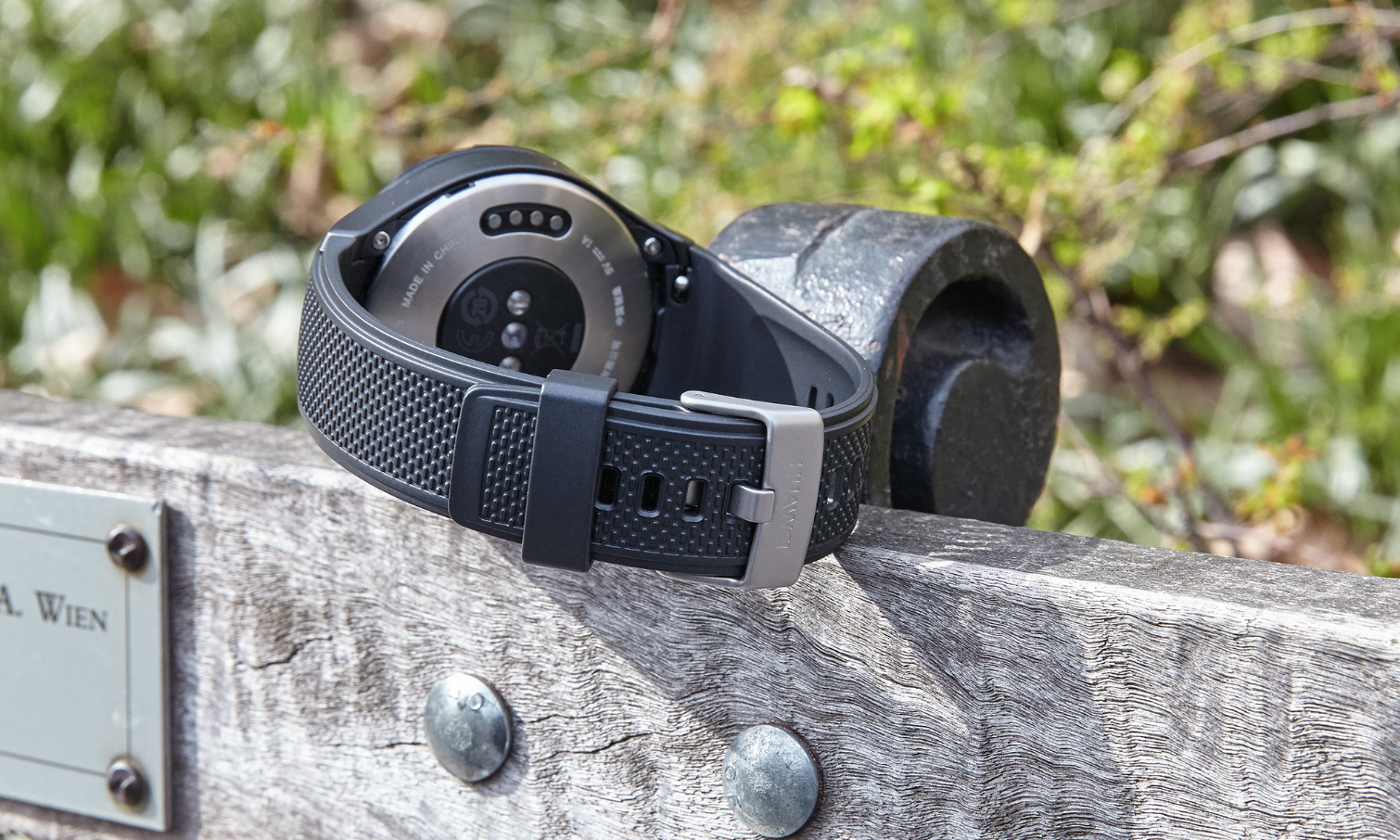
Huawei claims that the Watch 2 will last up to 10 hours using GPS and the heart rate monitor, After a 40-minute run (with GPS and the HRM), the Watch 2's battery life decreased by 8 percent. That translates to a little more than 8 hours. While that's less than Huawei's estimate, it's much better than other smartwatches we've tested under similar conditions.
I liked that the Watch 2's USB charger, while proprietary, was a simple clip-on affair. Too often, the chargers that come with smartwatches are big and bulky.
MORE: Extend the Battery Life on Your Android Wear
Bottom Line
While I was testing the Watch 2, Huawei CEO Eric Xu Zhijun was quoted as saying, "I am always confused as to what smartwatches are for when we have smartphones." His ambivalence about the category reinforced mine, and nothing about the Huawei Watch 2 alleviated that feeling. While I liked the Watch 2's battery life and charger, and I think it's pretty good at fitness tracking, neither features are good enough for me to recommend spending $300 on it.
When the CEO of a company that makes smartwatches can't muster enthusiasm about his own products, that doesn't inspire much confidence. And he's right — Huawei's CEO can't provide a compelling reason you need the Huawei Watch 2. And neither can I.
Credit: Jeremy Lips/Tom's Guide

Michael A. Prospero is the U.S. Editor-in-Chief for Tom’s Guide. He oversees all evergreen content and oversees the Homes, Smart Home, and Fitness/Wearables categories for the site. In his spare time, he also tests out the latest drones, electric scooters, and smart home gadgets, such as video doorbells. Before his tenure at Tom's Guide, he was the Reviews Editor for Laptop Magazine, a reporter at Fast Company, the Times of Trenton, and, many eons back, an intern at George magazine. He received his undergraduate degree from Boston College, where he worked on the campus newspaper The Heights, and then attended the Columbia University school of Journalism. When he’s not testing out the latest running watch, electric scooter, or skiing or training for a marathon, he’s probably using the latest sous vide machine, smoker, or pizza oven, to the delight — or chagrin — of his family.
